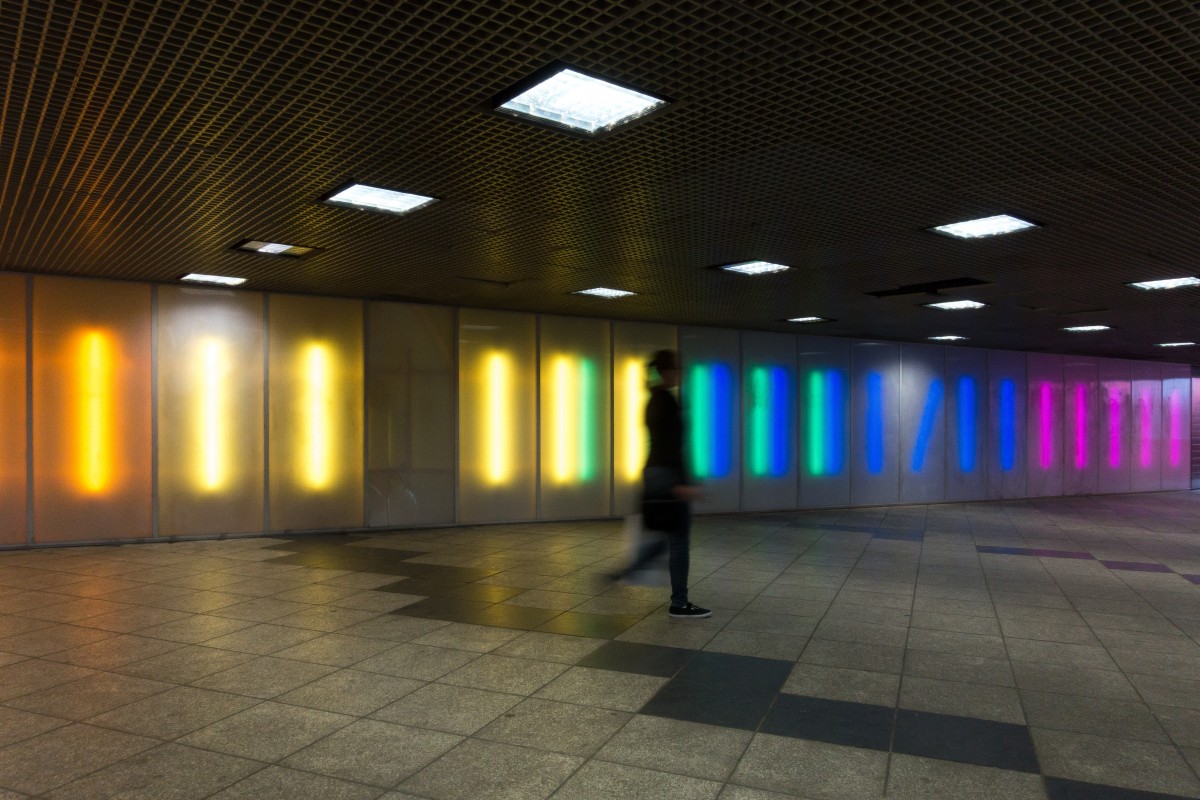
Like the flag sign, the wall sign, the letter sign or the roof sign, the ground sign is an excellent promotional and signage medium that perfectly complements a company’s advertising system.
Definition of a ground sign
A ground sign is a sign installed directly on the ground, usually on a mast or on a stand, whose purpose is to:
promote your business and your products;
attract the attention of the consumer;
convey your image.
It can thus put forward:
- your logo,
- a commercial offer,
- the name of your shop,
- your slogan.
Businesses concerned

Ground-mounted signs are generally used by businesses or shops whose premises are set back from the public highway.
This allows them to be visible to pedestrians and motorists, unlike a sign that would be installed on their frontage.
They are also used by shopping centres, which install them directly in their car parks.
Ground sign models
Like other signs, floor signs come in many shapes, colours and materials. It is made up of 2 distinct categories:
Single-sided ground signs allow a single advertising poster to be affixed to their front face.
Double-sided ground signs: one type of advertising poster can be placed on each side, front and back, of the sign.
Ground signs: what are the regulations?
Whether at a national or local level, the regulations on outdoor advertising are very restrictive for signs set on the ground or installed directly on the ground:
At the national level, you must respect constraints on location, size and installation:
Ground-mounted signs of more than 1 m² may not be installed within 10 metres of the opening of a neighbouring building.
Signs may not exceed:
6 m² in built-up areas of less than 100,000 inhabitants;
12 m² in built-up areas with more than 100,000 inhabitants.
The maximum height of signs is:
- 6.5 m for a width of 1 m or more;
- 8 m for a width of less than 1 m.
A single double-sided sign or two single-sided signs may be installed outside built-up areas and in towns with fewer than 10,000 inhabitants.
At the local level, some urban areas have other restrictions or ban ground-mounted signs altogether, which they designate illegal.
Now let’s turn to the Roof Sign.
Like the flag sign, the letter sign or the ground sign, a roof sign, or a real marketing device brings certain visibility to your company: it reflects the image you wish to convey.
Definition of a roof sign

As its name indicates, the roof sign is a sign placed on the roof of the building in which a professional activity is carried out. The roof sign is thus placed to be seen from a distance.
Roof signs: what does the legislation say?

The municipality and the environmental code impose rules to be respected for installing roof signs. The latter states that:
- When roof signs indicate an activity carried out in more than half of the building where they are affixed: they must be designed with lettering or cut-out signs that conceal their fixing.
- In less than half of a building: they must comply with the legislation applicable to advertising signs on roofs or terraces.
The height of roof signs must not exceed 6 metres if the height of the building is greater than 15 metres and 3 metres if the height of the building is less.
There can only be one roof sign per building.
Important: in urban units with less than 800,000 inhabitants, illuminated signs and advertisements must be switched off between 1 a.m. and 6 a.m. when the advertised activity has ceased.
All in all, why choose a roof sign?
Rooftop signs offer many advantages to the businesses on which they are placed, including
- high attention-grabbing power, more significant impact;
- better legibility (usually very large) and high visibility from a distance;
- an excellent means of identifying and locating your business.
- The activities represented by rooftop signs are most often:
- Hotels;
- large industrial companies.
Read more:
- Why Choose Illuminated Signage for Your Business;
- Illuminated Signage for Your Business: Advantages & Drawbacks of Lightboxes;
- Measuring the Impact of LED and Neon Signs;
- How Signs Are Used in Advertising.

One Reply to “What Is The Difference Between a Ground Sign and a Roof Sign”